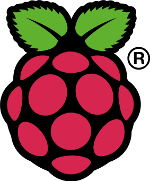Schwabach, August 12, 2015. With the new Windows 10 IoT Microsoft provides a universal platform, which is available with different functions and features targeting various devices and markets. The smallest feature set, Windows 10 IoT Core, is targeted towards embedded devices that may not even have a screen. More sophisticated devices, like mobiles and tablets, would use Windows 10 Mobile, and larger PC-type systems will go for Windows 10, which is the desktop variant, including all the functions and features one would expect from the successor of Windows 7 and 8.1.
The Internet of Things (IoT) focuses on headless devices suitable for industrial applications such as controllers (PLC) or smart sensors. By creating Universal Apps, simple GUI applications can be built. Microsoft made the new IoT Core platform run on x86 and x64, as well as on the ARM architecture, providing full integration into the new Visual Studio 2015. The new Studio comes with many features known from open source development (e.g. GIT and Android) and makes a huge step towards a cross platform build environment and collaborative development. Furthermore, Microsoft runs a website/blog containing tips and tricks for developers who want to create applications for the latest Raspberry PI 2, a SBC with 900MHz quad-core ARM Cortex-A7 CPU with 1GB RAM.
“We followed the various developer previews of Windows 10 IoT Core with great interest. They clearly showed Microsoft's engagement for open development and the focus on small embedded devices, that will form the IoT in the near future”, says Jürgen Boxberger, Executive Director at Unified Automation GmbH. “From an industrial application point of view and taking Industrie 4.0 into account, Windows 10 IoT Core seems to be a serious approach. For us, it was the logical step to port our ANSI C and C++ OPC UA SDKs to the IoT Core, providing Microsoft's new platform the industrial connectivity from the shop floor to the cloud. ”
On Windows 10 (Desktop), OPC UA SDKs are simply running out of the box, because here the Win32 API is fully supported. However, a patch will be provided with the next release versions to adapt the ANSI C and the C++ based OPC UA SDK to Win10 IoT Core. Furthermore, a runtime limited evaluation edition for Windows 10 IoT Core is planned to make the OPC UA SDKs available on Raspberry PI 2.
Raspberry Pi is a registered trademark of the Raspberry Pi Foundation. Windows 10 is a registered trademark of the Microsoft Corporation.



